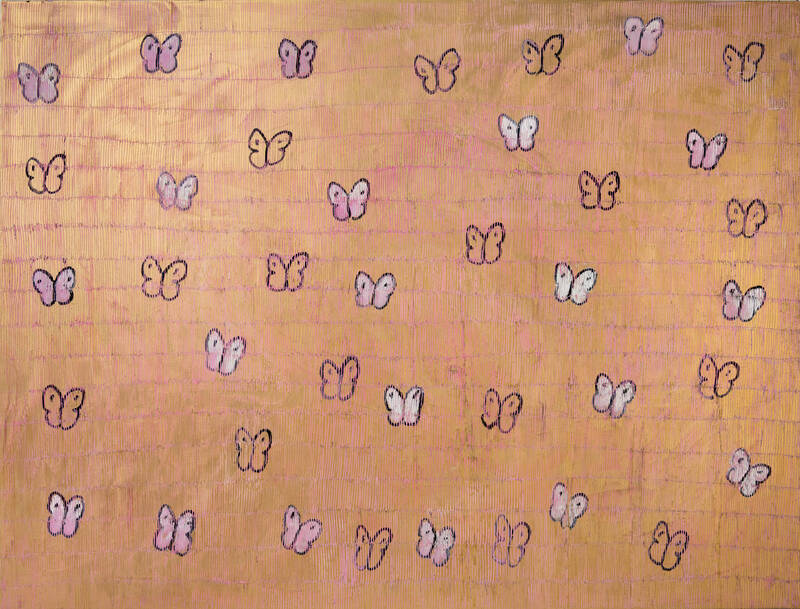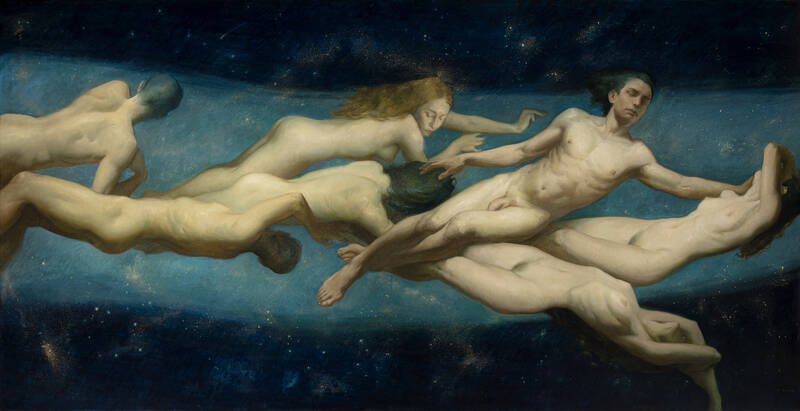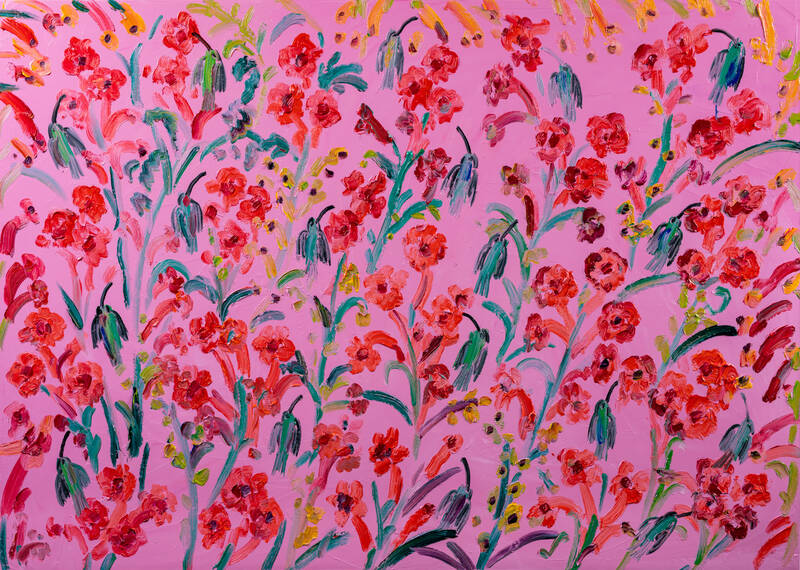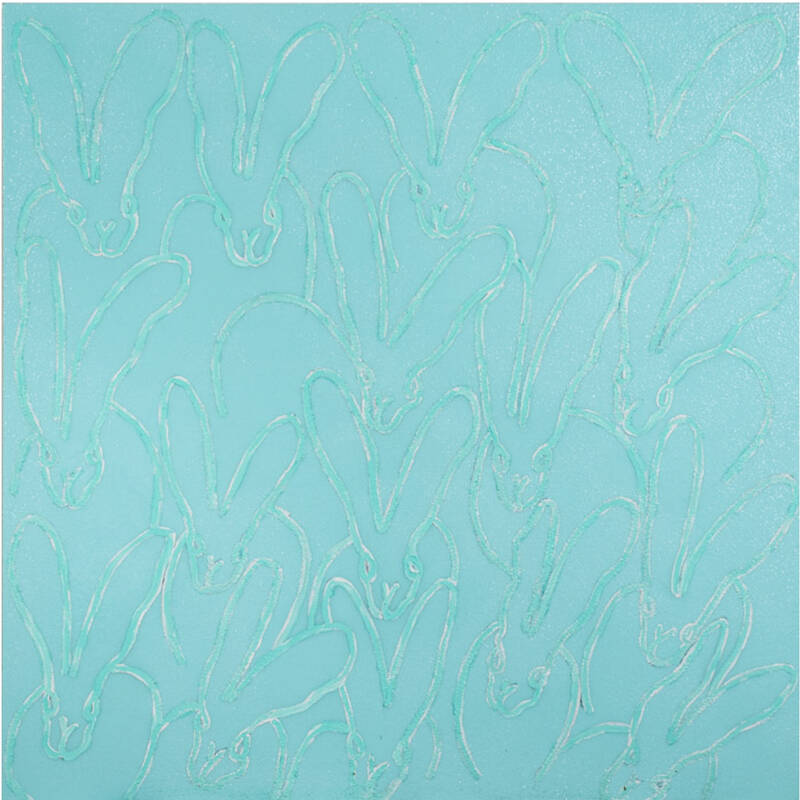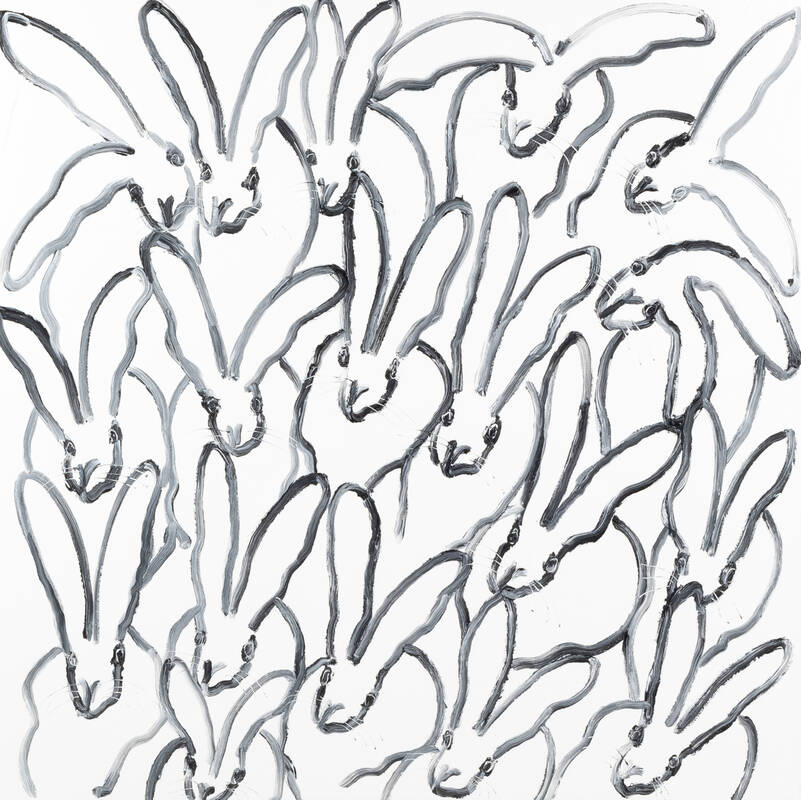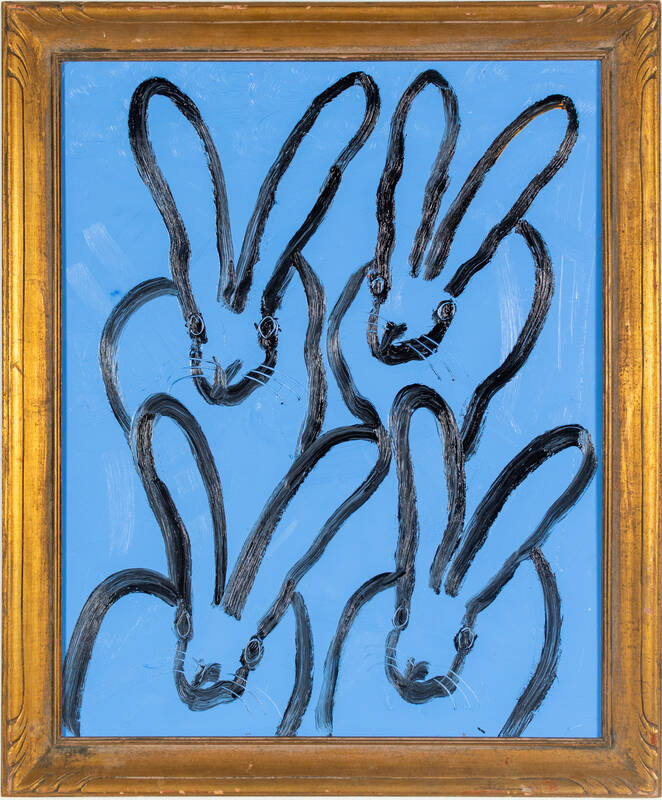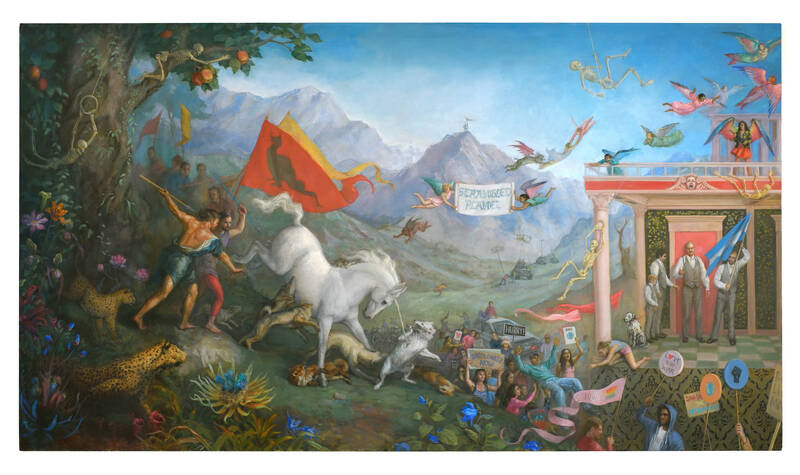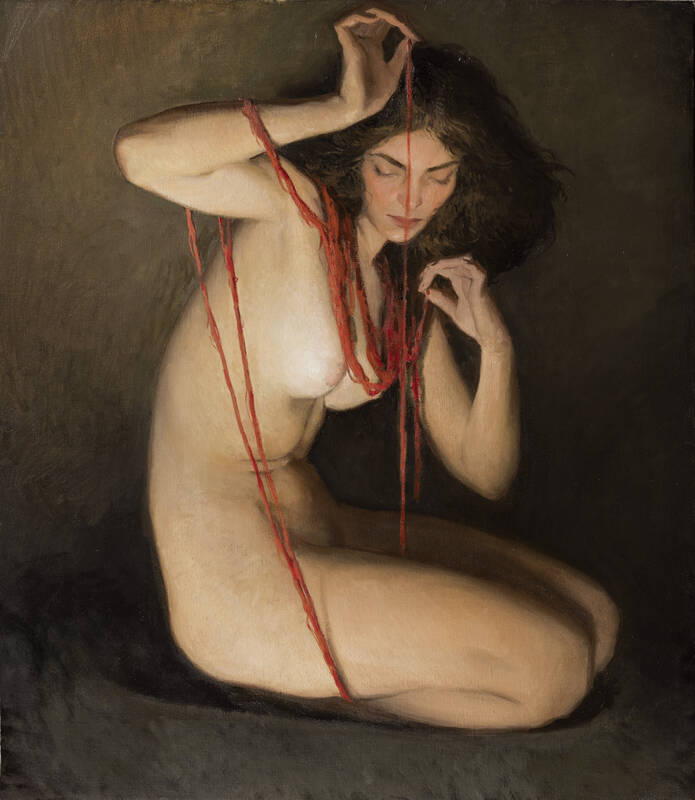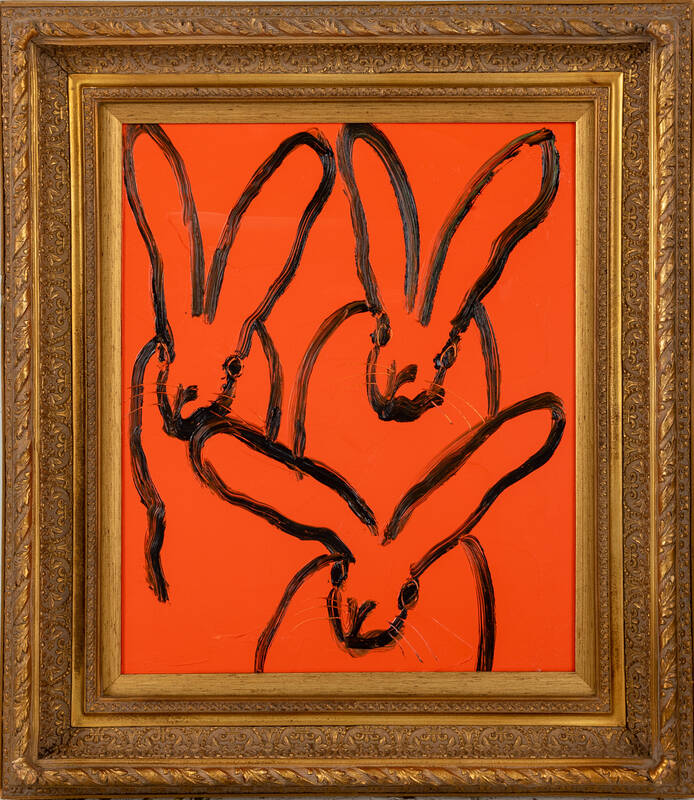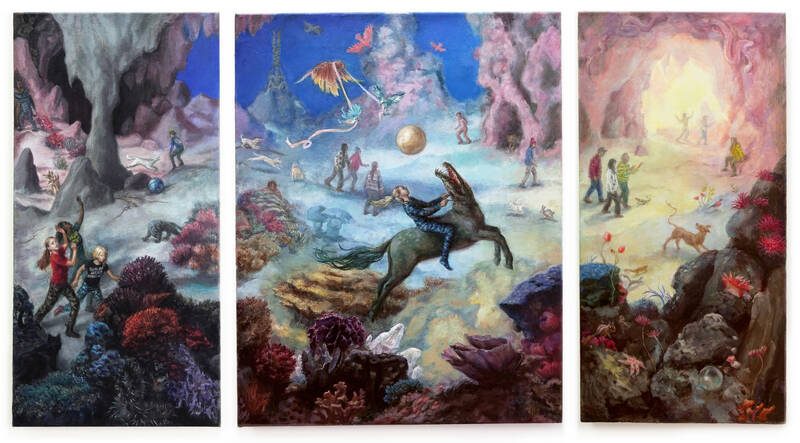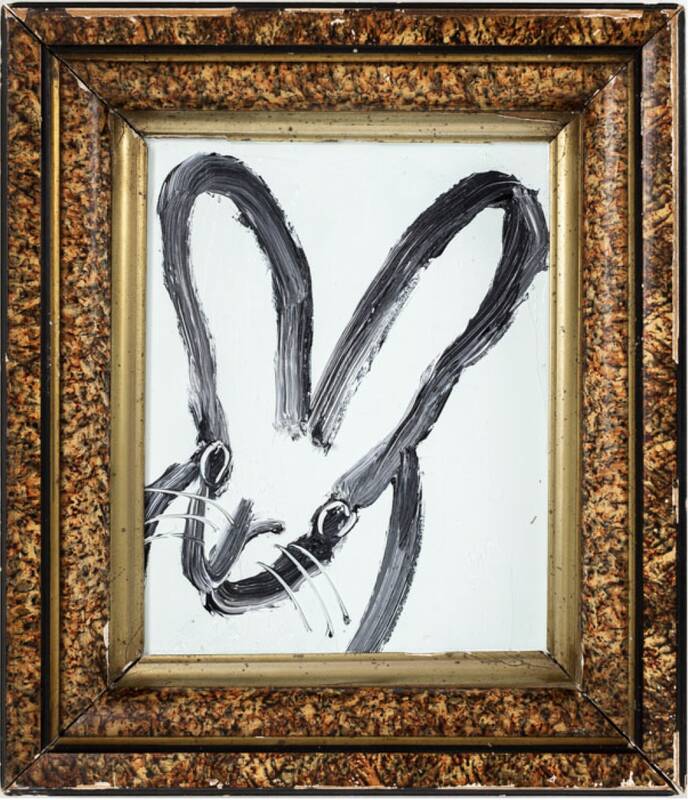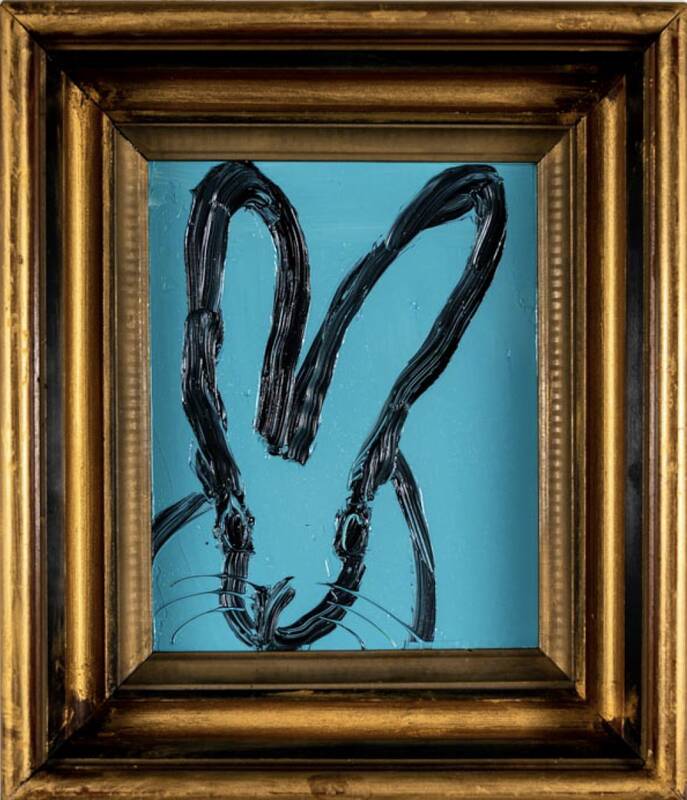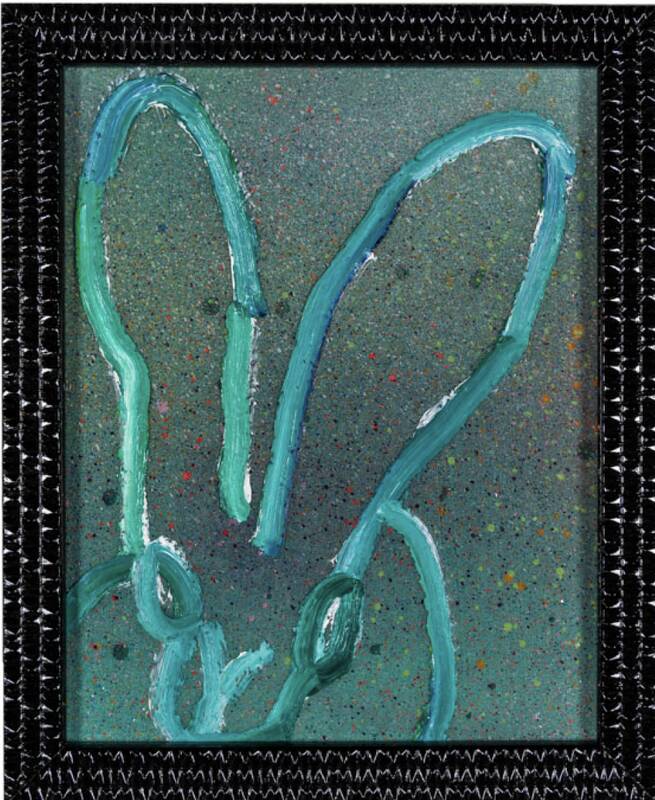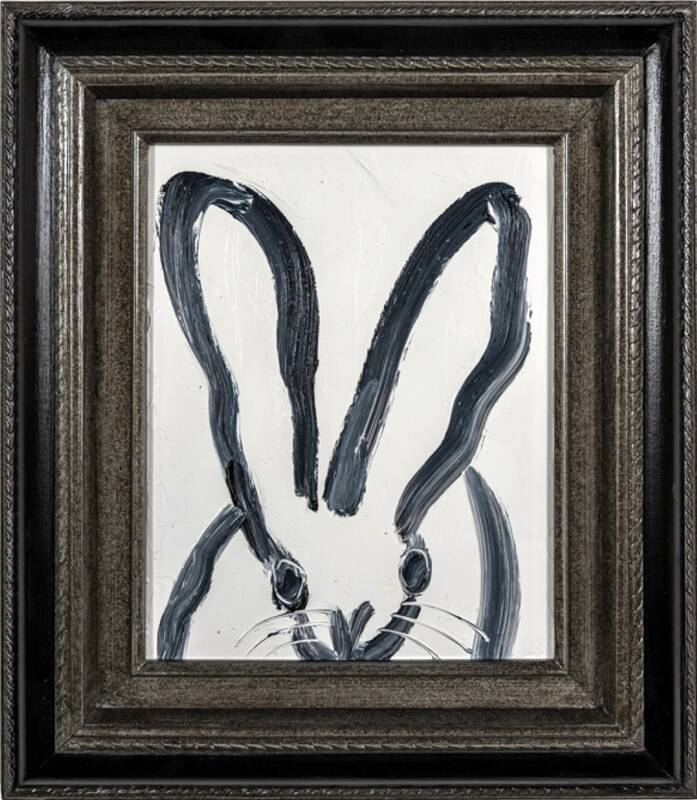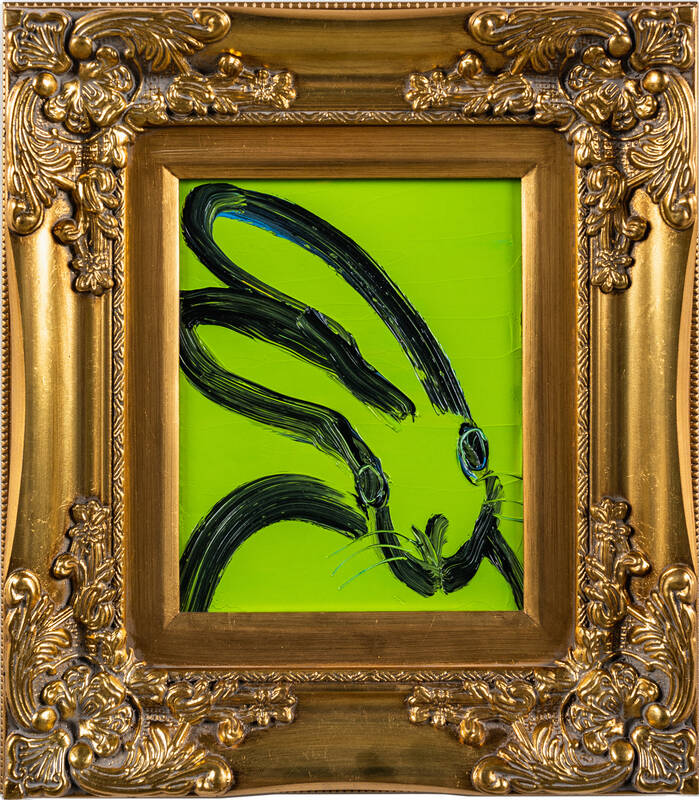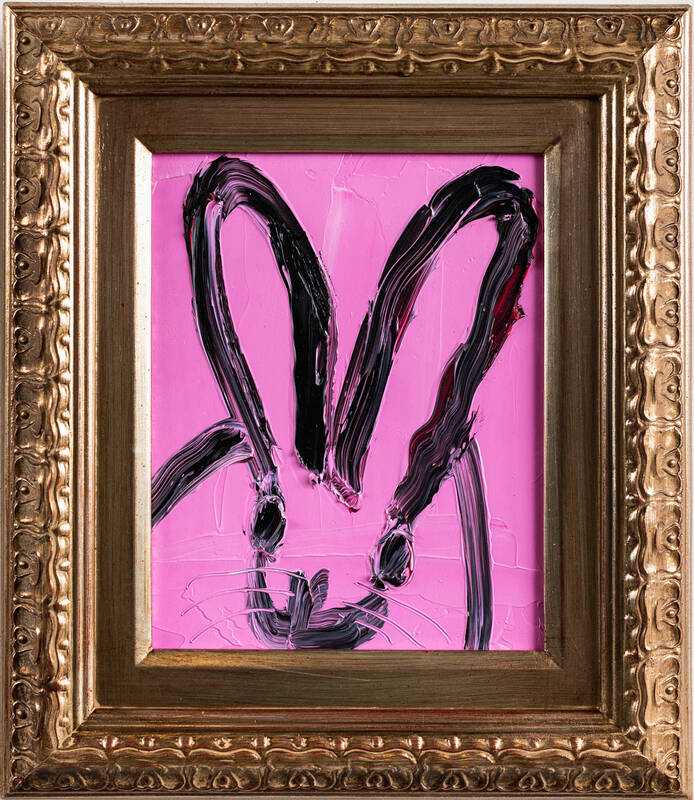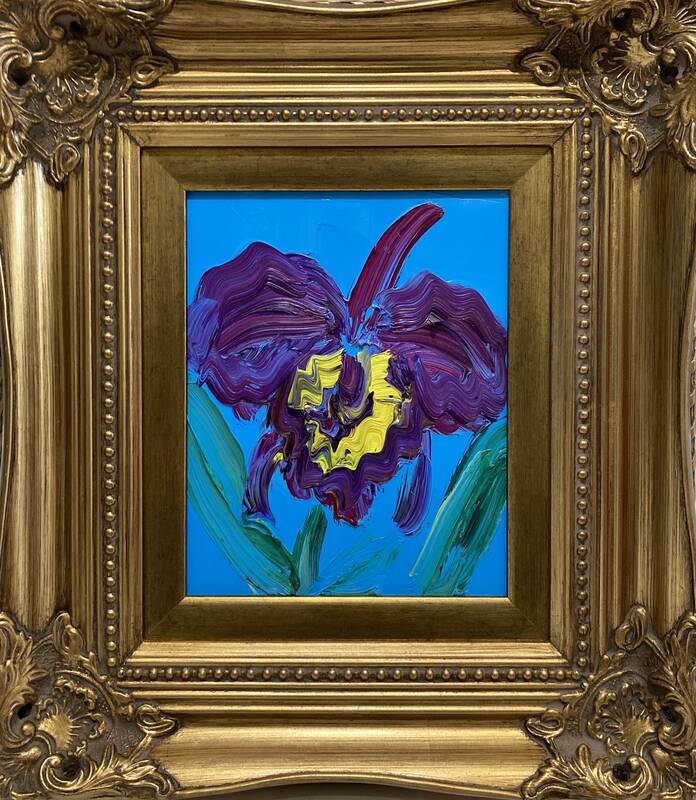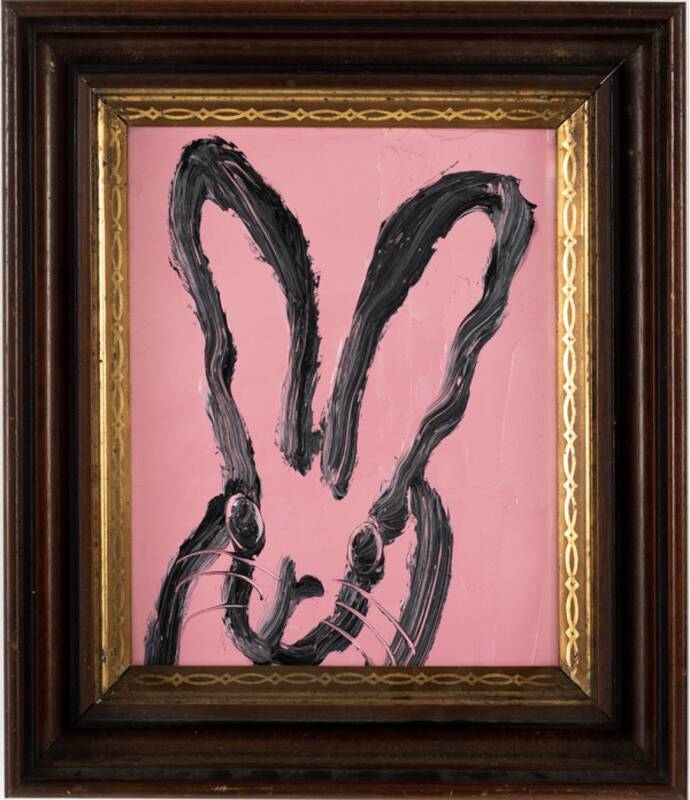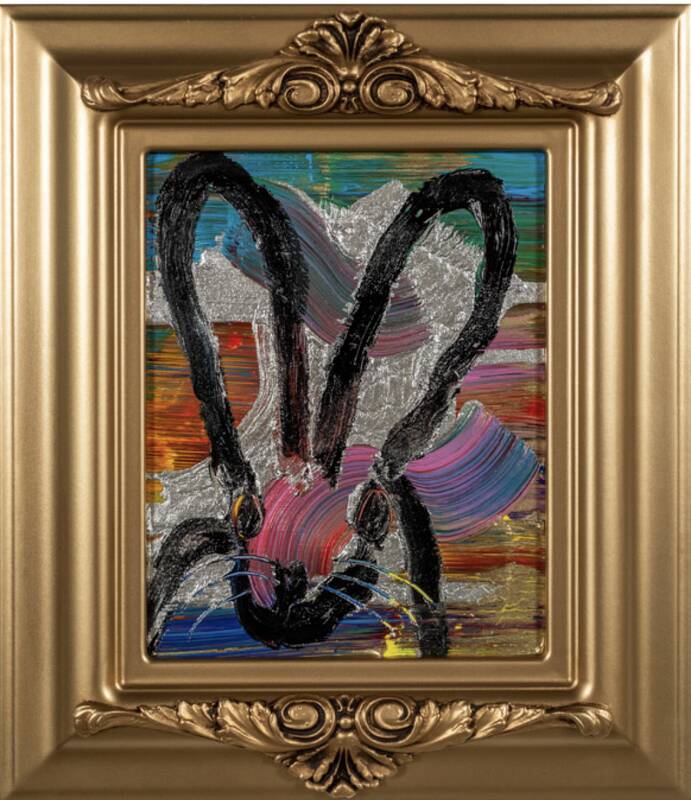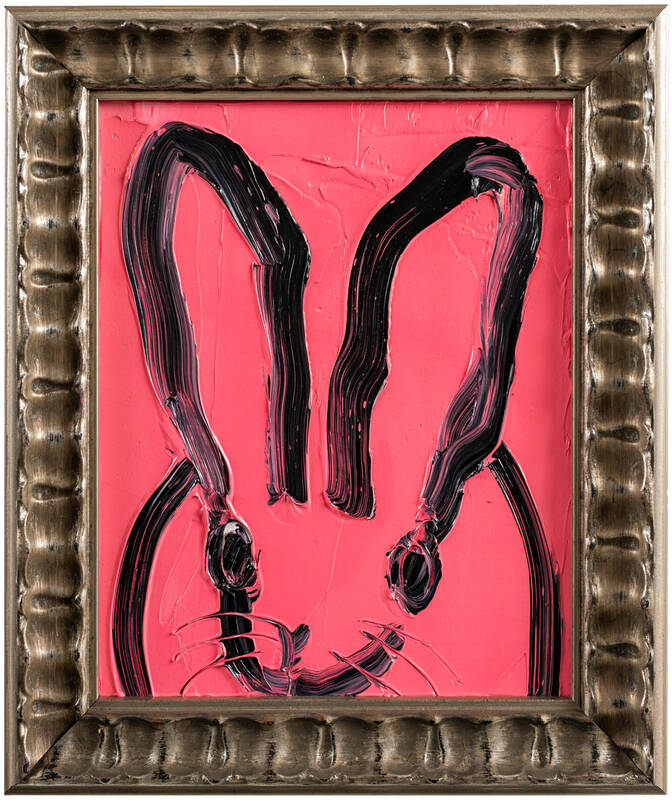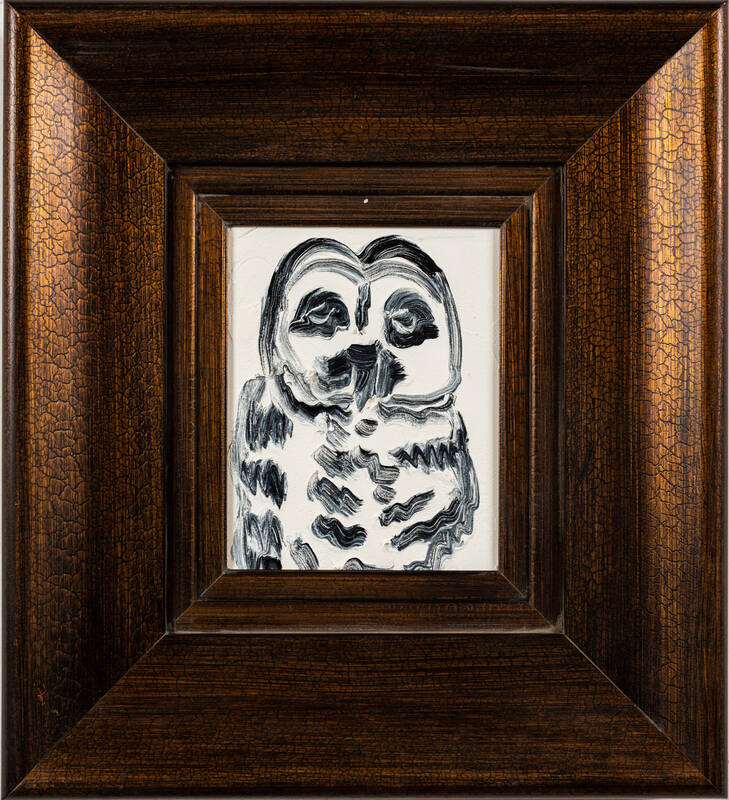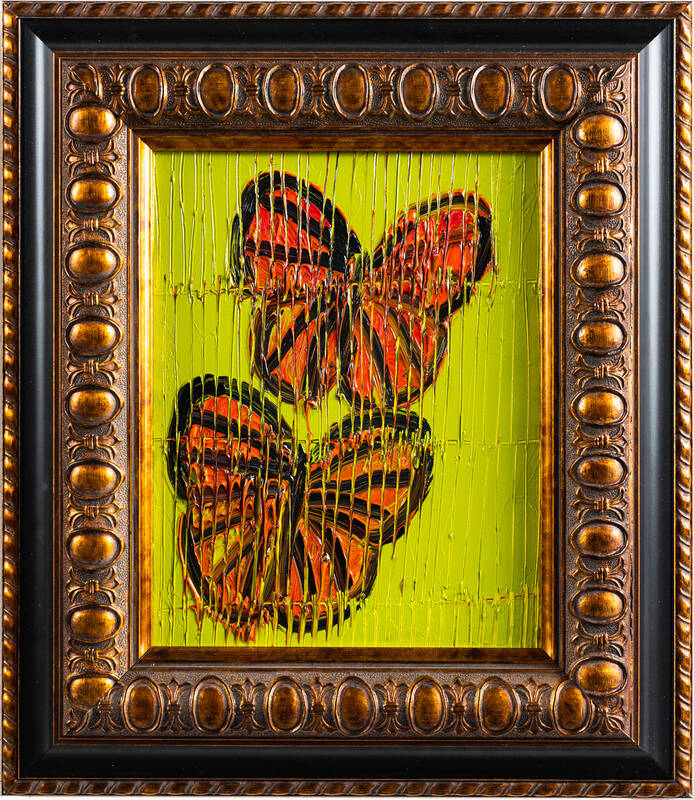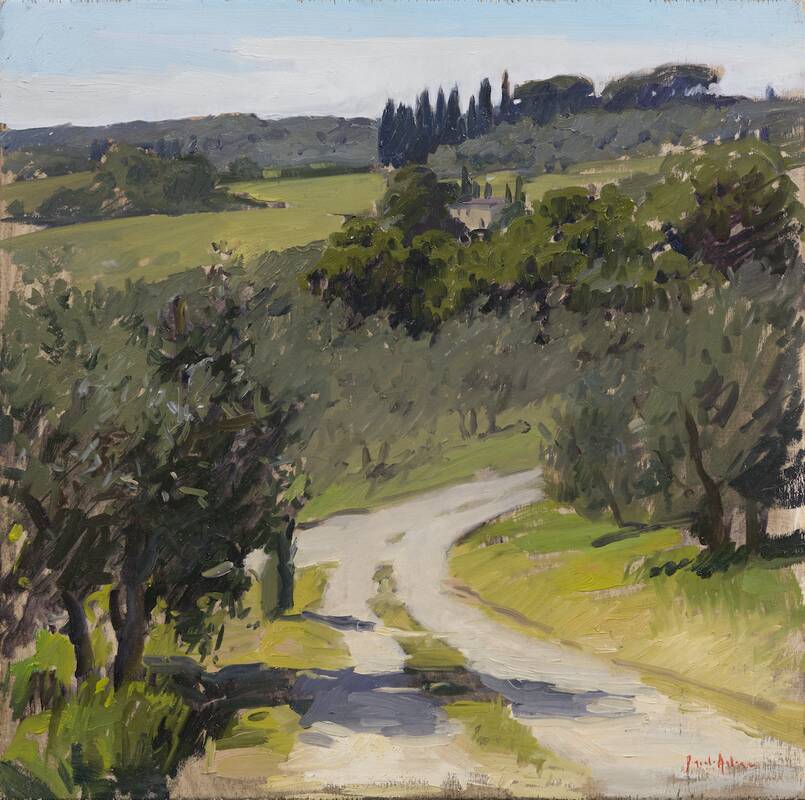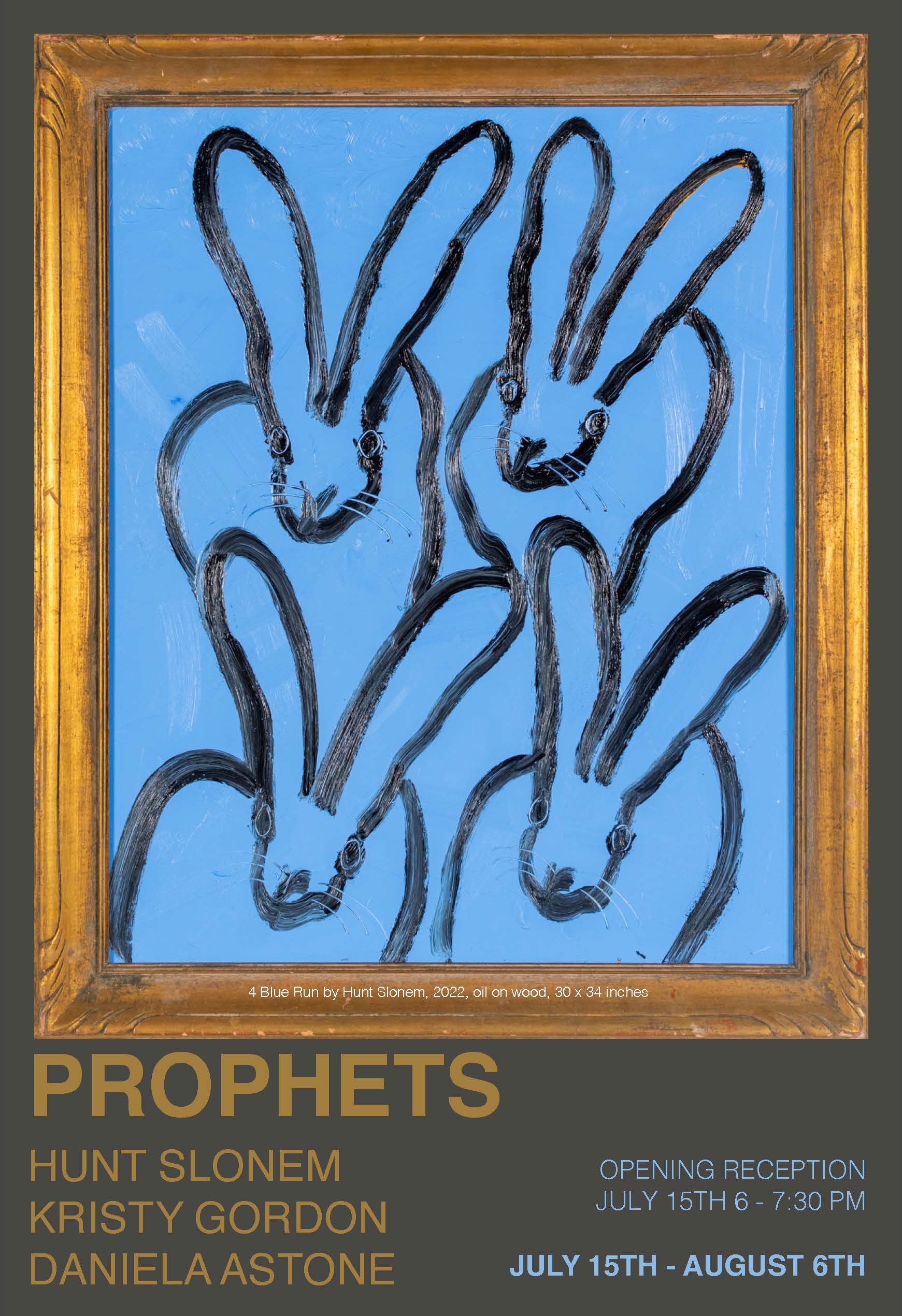
The Grenning Gallery is piously pleased to unveil Prophets, a group show featuring Hunt Slonem, Kristy Gordon, and Daniela Astone. Like prophets, the three artists of this exhibition deliver insightful messages about our world, as well as other realms from reality to the mystical. In each of their authentic voices, Slonem, Gordon, and Astone reveal to us what we sometimes cannot see by ourselves. This exhibit will be on view through Sunday, August 6th, 2023. Please join us for an Opening Reception on Saturday, July 15th from 6:00-7:30 pm.
Few Realize that Hunt Slonem (b. 1951, Maine, USA), the anchor artist for this exhibition, is tapping into his own spiritual life when he is creating his iconic paintings of bunnies, birds, butterflies, and flowers. Although some viewers quickly write off Slonem as a fashion-forward, pop artist, most are unaware that he meditates and prays for hours before he starts painting every day. When he is working, he considers the paintings to be like mantras. Each painting carries its own inflection when it's created.
His subjects are not simply likenesses of creatures; however, they are chosen with reverence and intent. For instance, Slonem was born in 1951, Year of the Rabbit in the Chinese Zodiac. Not only does it have personal significance, but the rabbit is an icon with multiple cultural interpretations. In Christianity, the rabbit represents rebirth, fertility, and resurrection. Yet, in Buddhism, the rabbit symbolizes humility, kindness, and compassion. Slonem identifies with an all-encompassing spirituality, that would invite boundless elucidations. The meaning of his work, like any artwork, can be determined by the viewer. The artist leaves the door open for whatever conclusion one wants to make. And he's smart, because this candor has built a massive following and an incredibly in-demand market. Not to mention, Slonem has created a global reputation; having had his works placed in over 250 museum collections world-wide.
In this show we have several classic signature Bunny paintings, but we also feature some of his newest major creations, involving Irises and Hummingbirds. Slonem's Irises, or to be more specific, "Catelayas" are executed in lush royal purples above a grand gold backdrop, and of course, set within an elaborate gilded frame. The Catelaya is a very rare genus of orchid, native to Costa Rica and South America, an area the artist knows well from his childhood. Although, like the entire Orchid Species, these flowers are incredibly fragile in temperament, needing only a minimal amount of water and a fair amount of light, Slonem has shown them in full-blossomed glory. These violet, buttery florae are singing in celebration. It's unquestionably fitting, that the Catelaya are a symbol of beauty, and elegance.
Another new series we're excited to present from Hunt Slonem are his "Colibri & Trumpets", a fete of joyful hues of pink, fluttering birds, and stretching flora. Colibri is Spanish for Hummingbird, the widely-loved bird who's tiny form weighs less than a dime! Known for their ultra-fast heartrate, and wing speed, these charming little birdies are welcomed as messengers of joy, love, and good luck. This mighty little bird is also a symbol of beauty, playfulness, and resilience. The "Colibri Hummingbird" is a sacred symbol for the Taino Indians, because as a pollinator, the bird is therefore a disseminator of new life. Slonem's painting showcases this important ecological method. Tiny green birds attracted to vibrant trumpet flowers, which are known to be copious producers of nectar. This rejoice of pollination is so crucial in today's society, where the environment is at risk from the grave effects of climate change; rising temperatures, infrequent rains, invasive species overtaking native species, and of course, the desolate recurrence of deforestation.
Kristy Gordon (b.1980, British Colombia, Canada) articulates perplexing, yet ultimately critical messages about the world we live in today using techniques and configurations of the past--both grounding her assertions in an artistic tradition and reminding us that history repeats itself.
Gordon continues to develop the current series of mystical paintings which reflect her deep dives into her philosophic dreamscapes. Inspired by 15th Century to 18th Century compositions, this series is both prescient and reminiscent. Her latest work The Crossing, recently won second prize in the Belsky Museum's "Hope Out of the Darkness" exhibition. It is clearly based on famous triptychs of the past; from Robert Campin's The Merode Altarpiece to Hieronymus Bosch's Garden of Earthly Delights. Historically, triptychs tell a story, where each panel holds an essential moment in the narrative. In Gordon's The Crossing, although at first it is unclear what exactly the narrative is, it's evident that the mood of this chronicle evolves from despair and darkness on the left, to climactic revelation in the center, and finally to buoyancy and light, on the right. This theme is easy to decipher, yet the viewer must inspect each feature up close to discern what other wisdoms Gordon may be disclosing.
Further metaphysical theories continue in Gordon's smaller scale works. Death and rebirth, the emotional response to motherhood, our constant fixation with the meaning of life, redefined spirituality, and the stories we tell ourselves to understand the mysteries of life and consciousness. Few classical realists are able to use compositional choices from bygone eras yet pack them with so many layers of contemporary life. Gordon's dreamlike paintings are not only fascinating, but they are also an aesthetic visual feast.
Finally, we are thrilled to include several new works by Daniela Astone (b. 1980, Pisa, Italy), a notable figurative artist who has primarily sold her works in Europe until recently. Although emanating from one of the finest classical ateliers in the world, the Florence Academy of Art, wherein she learned to master austere bravura of academic realism, Astone's work is evocative and carries an other-worldly quality that is uniquely astute and unforgettable. Astone conjures a spiritual universe that forces one to pause and ruminate in front of her canvases.
In Milky Way her figures seem to be traveling in outer space along a channel of light. We see the influence of contemporaries like Odd Nerdrum in her glowing figures, yet these seraphs floating high within an opulent blue galactic setting brings to mind frescoes from 14th Century masters like Giotto. Are they traveling through one of Einstein's worm holes? Are they drifting from one life, into the next? Is this an enquiry of science or spirituality?
A common subject one might find within Classical Painting Ateliers is of a woman holding a red thread. Daniela's "Red Thread" is an exceptional depiction of this classic subject. In Greek Mythology, the story of Ariadne helping Theseus slay the minotaur and escape the Labyrinth by giving him a ball of red yarn to unroll which led him out to freedom. In Eastern philosophy, red thread symbolizes, good luck, protection, and Yue Lao, the lunar, matchmaker God, charged red thread with destiny for love between soulmates.
Here, Astone shows a seated nude woman entwined within a thick wool thread. There's a possibility that she is tangled, or trapped, within this knot-prone strand. Red is a widely known symbol of danger, so our instincts drive us to that concerned conclusion. However, there may not be any need for distress. If we look at her through another lens, she is determined, and very much in control of the yarn she weaves. There is order to each action, and rationality in her thoughts. Red is also known as a sign of love, or passion; a close connection to the beat of our hearts, and the blood in our thread-like veins. Each supposition is up to interpretation, similar to the way that the impulses of heart are so often in contrast to the requirements of our thoughts.
In Astone's smaller-scale works, consisting of landscapes and tranquil still lives, we see her deft facility lending spiritual weight to everyday items and settings. This is like the Amish tradition of seeing and finding spirituality by taking great care in one's everyday tasks, holding reverence for the environment surrounding us as well as the structures we as men, have erected, and live within.

